The Best Passive PA Speakers 2023 - Under $1000
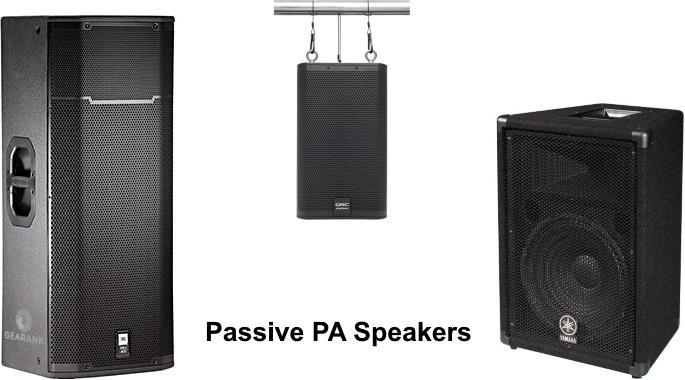
The Best Passive PA Speakers Under $500
This is the price range where most people get their unpowered speakers. So it's unsurprising to know that this is where competition gets tough. This is where manufacturers are continually improving the quality of their products. A $1,000 budget affords you two or more of these speakers; some will give you enough change to get accessories.
Yamaha BR12
Cons
- Carpet finish frays over time
- Finish catches a lot of dust
Pros
- Neutral sounding speakers
- Great long-term durability
- Heavy duty speaker handles
- High quality materials and components
Yamaha is a trusted brand for their speakers and pro audio gear. And their expertise in passive studio monitors carries over to PA sound reinforcement with the Yamaha BR12.
The BR12 features a 1" Titanium compression driver for clarity even at higher volumes.
It's a solidly built speaker, as expected from Yamaha. Given the track record and longevity of their famed NS10 speakers, their durability puts a lot at ease.
The sound quality is quite good, it has a smooth frequency response that does not over emphasize certain frequencies. And it's volume is suitable for small to medium venues that require a more upfront sound, especially for voices. But it also works well with acoustic guitar, electric guitar, keyboards, and other instruments.
One downside is that the carpeted finish tends to fray over time with repeated handling. They also catch a lot of dust on more permanent installations.
There's a reason why the Yamaha BR12 is currently the best passive speaker in the sub-$500. This is a great entry-level pick if you're looking for a neutral to midrange-focused passive speaker that sounds excellent for voices.
Specifications
- 12" LF Driver
- 1" Titanium compression driver
- Program Power: 300W
- Peak Power: 600W
- Sensitivity: 97dB sensitivity
- Impedance: 8 ohms
- Frequency Range: 65Hz-20kHz
- Weight: 35.2 lbs.
JBL JRX215
Cons
- Given its 15" speaker, it's quite bulky
- Design might not fit some interiors aesthetically
Pros
- Clean sound even when played loud
- Peak capacity of 1000W gives great headroom
- Handles low frequencies well
- Dual-angle pole-mount socket
JBL quickly became an award-winning brand a few years after it was founded in the late 1920s. They are a well-known musical equipment brand specifically for JBL professional speakers. In particular, JBL concert speakers are well-received the world over.
The JRX215 continues the company's legacy of being accessible and providing superior performance. It is an affordable passive speaker with a 15" woofer and 1" tweeter.
It has good power handling for the price and also sports an impressive peak capacity of 1000W, more than capable of being driven hard.
The sound is clean and detailed. It keeps clarity and composure even when driven hard. Its low-end handling is worth noting, with all but the heaviest sounds needing additional sub-reinforcement.
On a less performance-oriented note, the speakers aren't the best looking. If aesthetics don't bother you, this won't be an issue. But for those that factor in aesthetics, the JRX215 might not complement some interior designs.
This is a great budget speaker from a reputable manufacturer, which should be considered when looking for a good 15" passive PA speaker.
Specifications
- 15" LF Driver
- 1" HF Driver
- Continuous Power: 250W
- Program Power: 500W
- Peak Power: 1000W
- Sensitivity: 1W/1m: 99 dB
- Impedance 8 ohms
- Frequency Range: 41 Hz - 18 kHz (-10 dB)
- Maximum Peak SPL: 129 dB
- Weight: 60.5 lbs.
Mackie C300z
Cons
- Not meant for polonged high-volume use
Pros
- Rugged molded cabinets
- Good audio fidelity
- Clear and crisp sound
The Mackie C300z is a reliable passive PA speaker with a balanced combination of power and clarity. Its 12-inch woofer and 1.75-inch titanium diaphragm compression driver ensure a clean sound output, handling high and low frequencies well.
While Mackie is known for thumpy bass, the C300z has a more balanced sound with exceptional fidelity across the entire frequency spectrum. This allows vocals to shine while retaining a punchy bass response. This makes this speaker viable for various sound reinforcement scenarios.
For a speaker of its class, it has a broad dispersion pattern that ensures consistent sound coverage.
And even at higher volume levels, it still retains good sonic clarity. Don't set it on high volume levels for too long; it should be fine.
All its components are protected by a rugged molded cabinet that can endure the challenges of live applications. Its robust construction makes it a dependable choice for different venue types.
The Mackie C300z is a trustworthy option for those seeking a versatile and dependable passive PA speaker.
Specifications
- 12" LF Driver
- 1.75" HF Driver
- Continuous Power: 300W
- Program Power: 500W
- Peak Power: 750W
- Sensitivity: 1W/1m: 98 dB
- Impedance: 8 ohms
- Frequency Range: 45Hz - 20kHz ( dB)
- Maximum Peak SPL: 123 dB
- Weight: 46 lbs.
Best Passive PA Speakers from $500 to $1000
Based on our analysis, these investments provide years of reliable use, flexible mounting options, loudness, and great sound.
JBL PRX425
Cons
- Bass can be too deep for some
- Bulky and heavy
Pros
- Deep Bass
- Clean sound at mid to high volume levels
- Can handle long high volume applications
- Durable and tough build
Expectations run high with a name like JBL, but the PRX425 doesn't disappoint. This heavy-duty passive speaker is the ultimate choice regarding coverage and reliability.
Equipped with two 15-inch woofers and a 1-inch polymer diaphragm compression driver, the PRX425 is a 2-way speaker that means business.
And while being loud and powerful is a given, its sound is surprisingly articulate, even when pushed hard. This makes it well-suited for live performances, DJs, and sound reinforcement applications.
Since it has two 15" woofers, the low-end response is deep and robust, allowing for punchy and thumping bass without subwoofers. Be warned that bass gets deep and may require EQ adjustments for those who prefer a flat response.
Another plus is its wide dispersion pattern sound projection, which has good consistency, which is impressive for a dual-woofer speaker in this size category.
Coming from JBL, the PRX425 has a rugged enclosure that can take a beating. This speaker can handle the rigorous demands of professional use. The downside to its durability and features is its bulk and weight. It's not ideal for lugging around.
If you're looking for a loud, robust, and trustworthy workhorse PA speaker, the JBL PRX425 is for you. Its stellar performance, impressive low-end response, and durability make it the best passive speaker for medium to big-size venues.
Specifications
- 2 x 12" LF Driver
- 1" HF Driver
- Continuous Power: 1200W
- Program Power: 2400W
- Peak Power: Not specified
- Sensitivity: 1W/1m: 100 dB
- Impedance 4 ohms
- Frequency Range: 48Hz - 19 kHz (-10 dB)
- Maximum Peak SPL: 134dB
- Weight: 74 lbs.
Things To Consider When Buying Passive PA Speakers
-
Getting a good passive pa speaker involves understanding the volume requirements of your venue. This entails understanding how much power is needed, and finding speakers that can meet the requirements.
The power rating specification applies to both active and passive speakers.
PA Speaker power ratings are most often listed values for Continuous (also often called RMS), Program (sometimes called Music), and Peak power. But what do these mean?
Continuous power refers to a worst-case scenario where you are blasting the speaker with sound at all frequencies (pink noise, to be specific) for hours and hours on end. The biggest problem with speakers is overheating, which doesn't allow the speaker to take a break and cool down. Unless you are in an avant-garde pink noise outfit with pieces lasting hours, your music won't stress the speakers this hard. This is the specification to watch out for when looking for speakers for amps.
Manufacturers also list Program or Music Power, which almost always double the Continuous Power rating. This rating is for some versions of 'typical' music power loads with dynamic range and relative quiet periods, allowing the speakers to cool down.
Peak power refers to how much your speakers can produce for an 'instant,' which can cause a lot of heat and is the limit to which the speaker's diaphragm can safely move. The Peak power listed is nearly always double the music power and four times the Continuous Power. Keep this information in mind when comparing speakers from different brands. Many tend to use other total power measurements.
-
Passive speakers don't have built-in amplifiers, so they must be paired with a separate power amplifier. And the two devices have to match if you want your audio system to sound good.
It's safest to match the Continuous RMS Power with the output power of your amp. But you'll get better results with a more powerful amp. A typical recommendation is about double this level, which, as we've learned above, is generally Program or Music Power.
So, if you have a passive speaker with a continuous power rating of 500W, the optimal amplifier is one rated 1000W or close to that. The reasoning is that apart from getting the most out of your speakers for typical loads, you are less likely to turn your amp up too high, which can lead to a clipped/distorted signal rather like a square wave.
A clipped signal from your power amp is the worst signal for your speaker and can damage them even at lower power levels. Some even recommend an amp that goes all the way up to the Peak Power. On the other hand, some suggest that matching to Continuous RMS Power is the safest bet.
The main point is to ensure your connected power amplifier doesn't go into the red, whatever the power rating is. Connect your speaker with an amp with double the Continuous RMS rating for normal music loads. Using the correct speaker cableis also important for the reliable and safe operation of your amplifier and passive speaker.
To avoid this complexity, you are better off with a powered speaker. Although, you'll still have to consider this information if you plan to utilize the power speakers' output. You also need to be using compatible Speaker Connector Types to properly connect your speakers.
-
The typical load for speakers is 4, 6, or 8 ohms (Ω). The safest route is to have an amplifier that matches the load (4-ohm amp output to 4-ohm speaker). Low-impedance speakers cause amplifiers with high-impedance outcomes to work harder. This results in audio clipping or faster heat build-up that may damage your equipment.
So pairing your speaker impedance properly is important to preserve your amplifier and speaker and to have a clear sound.
-
The wattage ratings of PA speakers relate to how much power they use up, and this sometimes only refers directly to how much sound they can produce. This is because speakers vary in their efficiency at making sound vs heat. The speaker efficiency rating is called Sensitivity, which is how loud in decibels (dB) it will be 1 meter from the speakers with 1 watt of power. The overall maximum loudness of the speakers is the Maximum SPL, which is also measured at 1 meter in front of the speaker.
While this can be a helpful comparison point, it's important to point out that this doesn't give you a consistent measure of what levels of clarity and precision there are at these high levels, so apart from cranking the speakers and listening from a safe distance, the best method is to check what others have experienced using the speakers in real life situations. Fortunately for you, this is what we've done and incorporated into our written analysis. To prevent unwanted noise and Crackling from Speakers, speakers have to be used at the proper sound levels.
-
Most top-rated passive speakers have either 12" or 15" woofers, with these two speaker sizes considered the most ideal for music PA systems. The general difference is that bigger 15" speakers offer more punch and low-end frequency response (although not as much as a subwoofer) at the cost of overwhelming some of the highs. They also tend to be more expensive and heavier. 12" speakers offer a more balanced sound for many applications. Still, they may need to be more for bass-heavy music.
Also worth considering is the size of the tweeter, the presence of a midrange woofer, and the material used for the cone and tweeter. Given the loud volume of these speakers, they aren't meant to be used as passive bookshelf speakers for low-volume listening.
-
Since passive speakers have no amplifier components, they are generally lighter than the average powered speaker. This makes them ideal for use in a mobile speaker system. For easier setups, look for passive speakers compatible with stand, hang, and wall mounts. Other portability features to watch include handle location, size, and weight.
Remember that you'll probably be using a set of speakers, so you have to consider the space and power source of more than one speaker. Having no active circuitry, passive speakers can't have modern features like Bluetooth. So, if you are looking for a wireless speaker, you'll have to go for an active speaker instead.
Power Rating - Continuous (RMS), Program, and Peak
Matching with Amplifier Power Ratings
Impedance Matching
Speaker Loudness and Sound Pressure Level (SPL)
Speaker Cone Size
Weight, Portability, and Mounting
Best Passive PA Speaker Selection Methodology
The first edition was published in 2016 and the current edition was published on October 17, 2023.
For this edition, we developed a short list of 41 Passive PA speakers primarily used as main speakers for Front of House applications. The sources we took into account reached around 5,300. This included the most recent and relevant data from various reviews, ratings, and forum discussions. Finally, all these data were processed by the Gearank Algorithm, which gave us the rating scores out of 100 that helped us further narrow down the list to just the very best. Like the previous editions, the recommended list is divided into two price brackets for convenience. For more information about our methods, see How Gearank Works.
Passive PA Speaker Summary
If you feel a speaker should be included above, first check to see if it's in our Music Gear Database, then let us know in the comments below if you would like us to consider including it.
About the Author and Contributors
Here are the key people and sources involved in this guide's production - click on linked names for information about their music industry backgrounds.
Lead Author & Researcher
Raphael Pulgar
I've been an audio engineer for 20 years specializing in rock and metal recordings. I also play guitar and produce original music for my band and other content creators.
I've worked with various sound installations and sound system providers. Passive setups are easier to maintain for large venues and houses of worship thanks to their ease of maintenance compared to active setups. Mounted speakers are easily serviced if any problems arise with a passive setup. On the other hand, active speakers have a lot of complicated circuitry that is more easily fixed if you take them to service centers. Passive speakers will not die out anytime soon, so do not fear investing in a passive setup if you feel it's a better fit for your purposes.
Contributors
Jerry Borrilo: Product research.
Jason Horton: Editing and Illustrating.
Alexander Briones: Editing.
Media
Main/Top Image: By Gearank.com using photographs of the JBL PRX425, QSC E110 and Yamaha BR12.
The individual product images were sourced from websites, promotional materials or supporting documentation provided by their respective manufacturers.



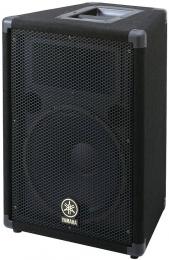
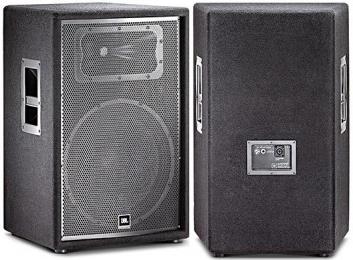
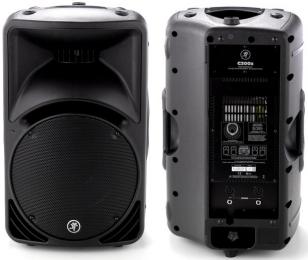
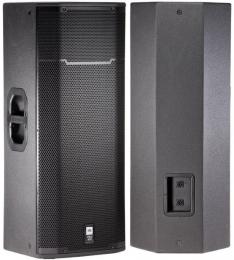
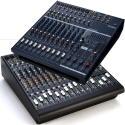
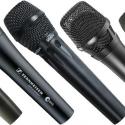
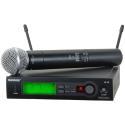
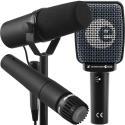
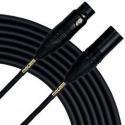
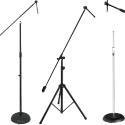
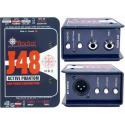
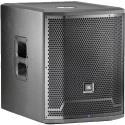
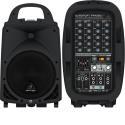
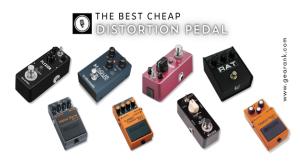
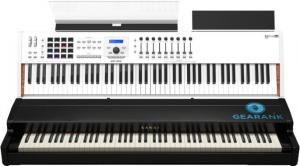
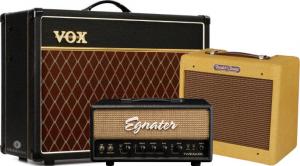
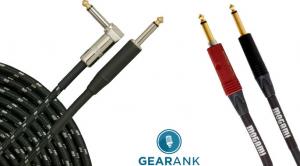
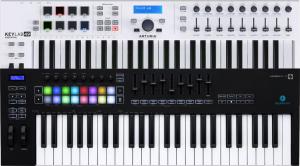
Comments
The following speakers came
Submitted by Jason Horton on
The following speakers came off the recommended list when we published the November 2022 Edition:
Publication of our December
Submitted by Jason Horton on
Publication of our December 2021 Edition resulted in the following speakers coming off the recommended list above:
I believe the ZX3 comes with
Submitted by Barrie Hutton (not verified) on
I believe the ZX3 comes with 2" HF & a 12" LF, not a 1" HF, 2" Mid & 12" LF as stated.
Our November 2020 update
Submitted by Jason Horton on
Our November 2020 update resulted in the following speaker coming off the recommended list above, but you can still see our analysis of it: Yamaha CBR15.
You have reviewed many Samson
Submitted by Pete (not verified) on
You have reviewed many Samson Pro Equipment, but I have yet to see you review their PA Speakers, not those toys with questionable headroom designated as active speakers mind you, The passive ones, and at least the 15" 2 way ones..
Yes we have rated many Samson
Submitted by Jason Horton on
Yes we have rated many Samson products (see them here).
We focus our analysis on gear that's available from retailers based in the USA.
Most of the US based music gear retailers don't sell Samson PA speakers, and those that do, like B&H, mainly sell Samson's powered speakers.
If Samson's passive PA speakers become more widely available in the US we will certainly provide ratings on them and consider including them in this guide.
As a result of our October
Submitted by Jason Horton on
As a result of our October 2019 update the following speakers came off our recommended list above but you can still see our analysis of them:
Where does the Peavey SP5G
Submitted by Christopher Thomas (not verified) on
Where does the Peavey SP5G fit in this lineup?
I didn't realize they made
Submitted by Jason Horton on
I didn't realize they were still making them - there are no SP 5 series speakers that I could find listed on the Peavey website.
Can you provide a link to a Peavey product page?
As a result of our January
Submitted by Jason Horton on
As a result of our January 2018 update, the following speakers were removed from our list of recommendations above:
Hey! I have an active15"
Submitted by Naveh Halperin (not verified) on
Hey! I have an active15" Electro-voice speaker (zlx 15p) that's very powerful and weighs 38 lbs. I don't understand why most of the speakers here weigh more, and some of them are only 12" woofers. Is there an explanation for that? I thought passive speakers were supposed to be lighter in comparison. Thanks!
The zlx is plastic, most of
Submitted by Johnny (not verified) on
The zlx is plastic, most of the speakers shown here are made of plywood.
What do you think of the
Submitted by Hampus (not verified) on
What do you think of the Rockville SPG15s? Have you tried them out? I've heard from so many reviewers that you can't get any better sound and punch than them for the price. They do also say it's too high highs, but it's fixed with some EQ though.
Rockville's passive speakers
Submitted by Jason Horton on
Rockville's passive speakers haven't had high enough ratings for us to do any detailed analysis on them in the past. We will be re-examining this category within the next few months so maybe we'll have something to say about them then, but a quick look at the data suggests to me that they'll have a hard time getting better ratings than other brands.
I bought a 1000W Mackie Thump
Submitted by Sponge (not verified) on
I bought a 1000W Mackie Thump 12. Is that a decent loudspeaker for
singing in an outdoor environment?
The Mackie Thump12 is a
Submitted by Jason Horton on
The Mackie Thump12 is a powered speaker, not a passive speaker like the ones in this guide.
You can see its current Gearank score here.
It's not one of the powered speakers that we currently recommend, you can see our recommendations in the guide to The Best Powered PA Speakers.
A question by Burton Brown
Submitted by Jason Horton on
A question by Burton Brown about powered PA speakers has been moved to the Powered PA Speaker Guide.
Thanks for the very helpful
Submitted by Bao Luu (not verified) on
Thanks for the very helpful information. How do you rate the Behringer B215XL vs. B212XL?
I've added the B215XL to our
Submitted by Jason Horton on
I've added the B215XL to our public database so you can compare both the B215XL & B212XL here.
You reviewed the Behringer
Submitted by T Bone D (not verified) on
You reviewed the Behringer VS1520, but I am interested in the more robust B1520 Pro. Any info or comparison to these available?
The Behringer B1520 PRO was
Submitted by Jason Horton on
The Behringer B1520 PRO was originally left out of this list because it wasn't immediately available or didn't have any customer reviews at several major online retailers.
I have just processed it to find its Gearank score and it came out equal to the VS1520 - you can see the Gearank score here.
Really informative! I haven't
Submitted by Dan (not verified) on
Really informative! I haven't bought new speakers in ages, and you just saved me loads of research time. Thanks!
Glad to be of help!
Submitted by Alexander Briones on
Glad to be of help!